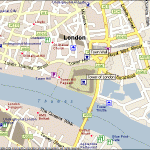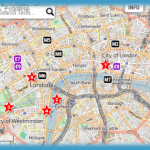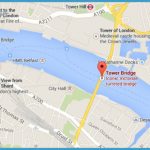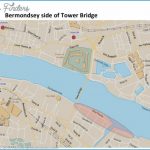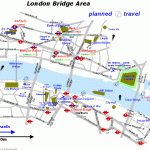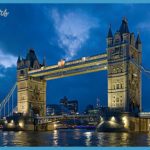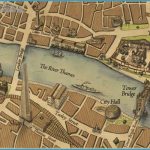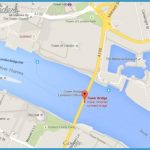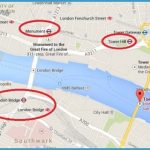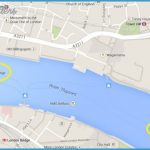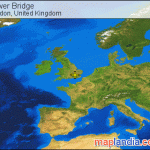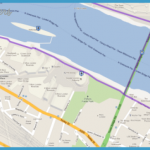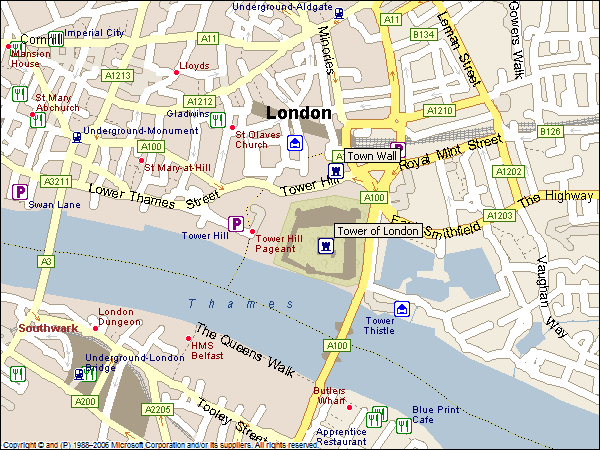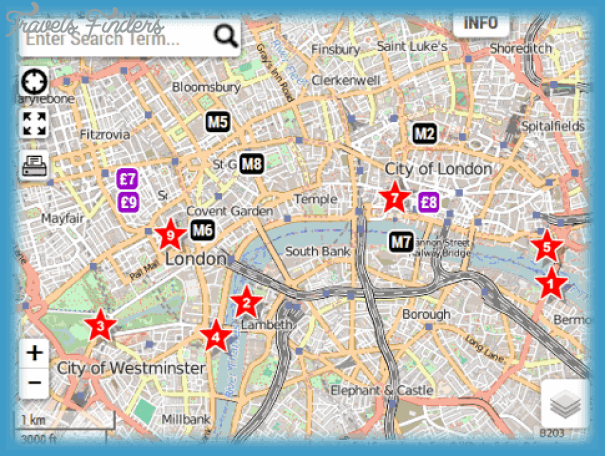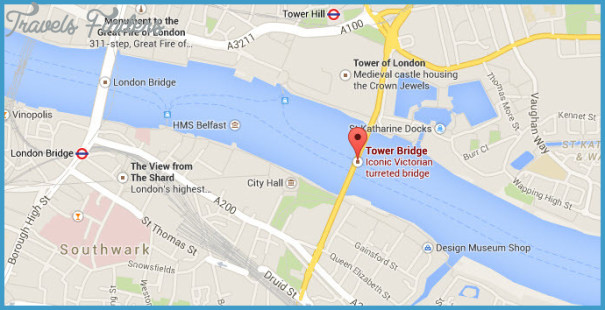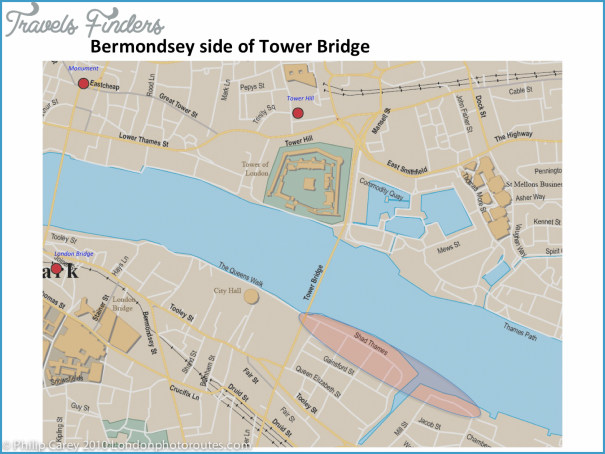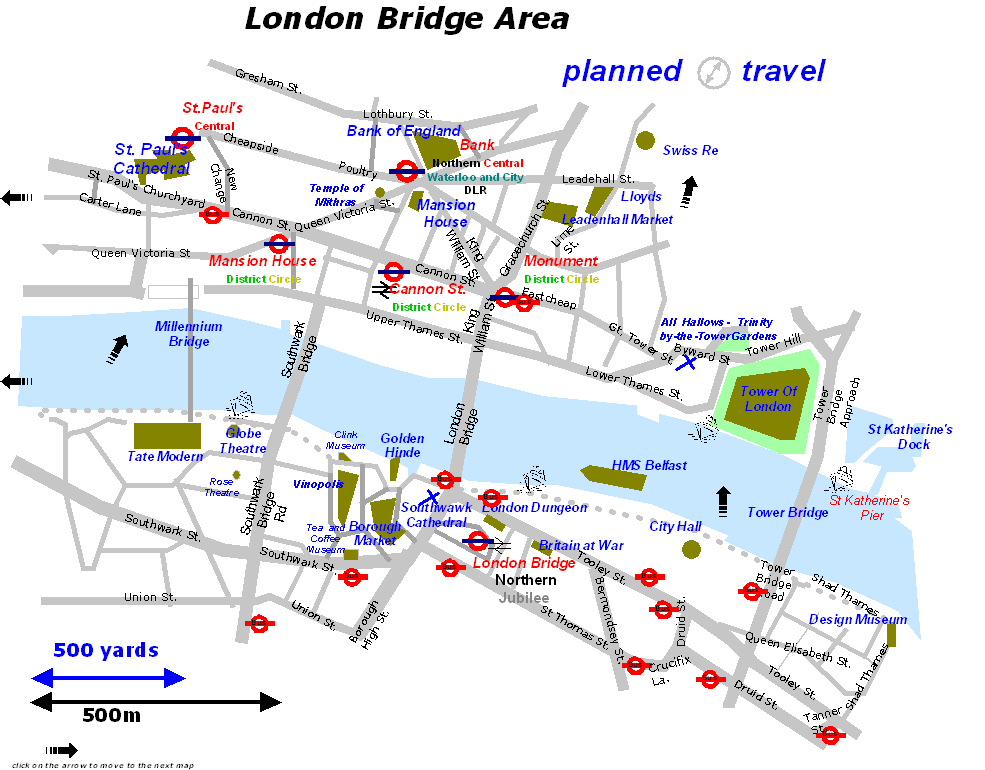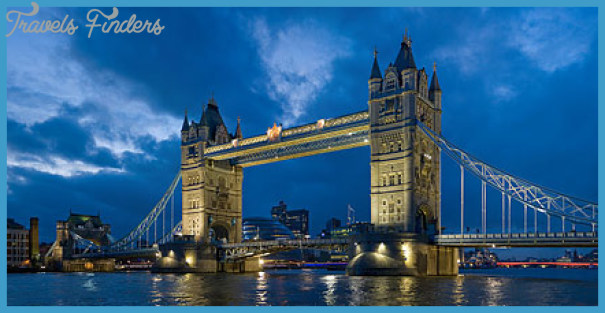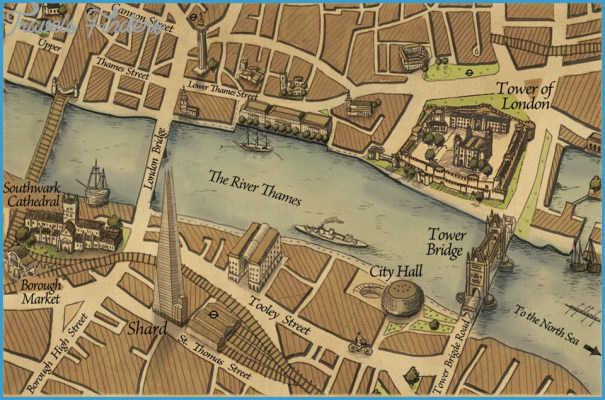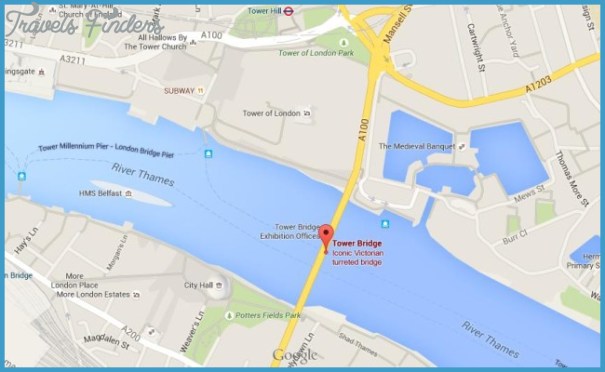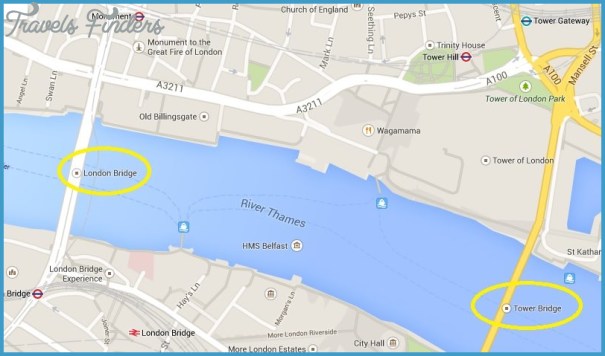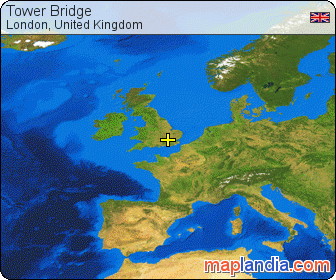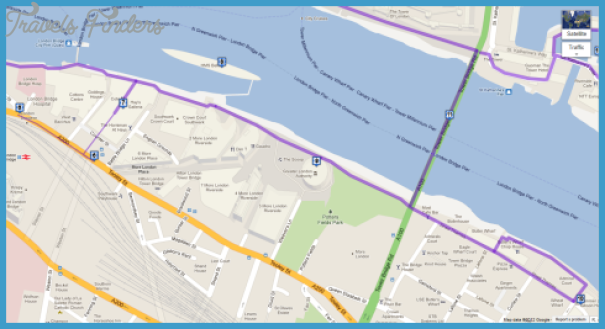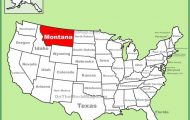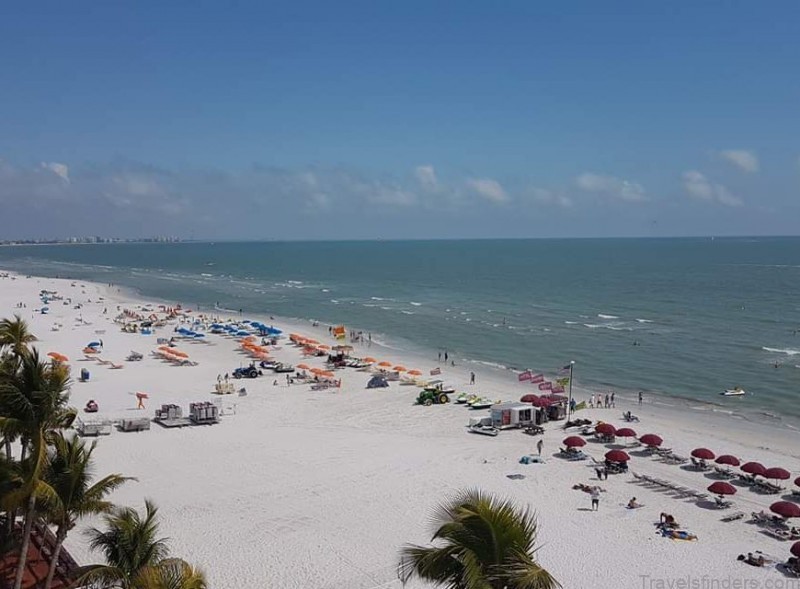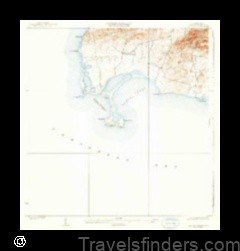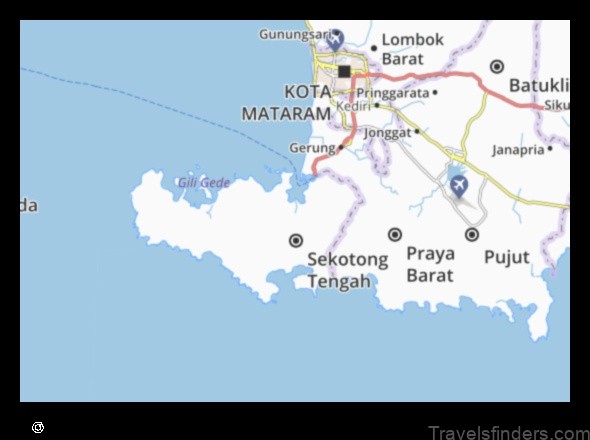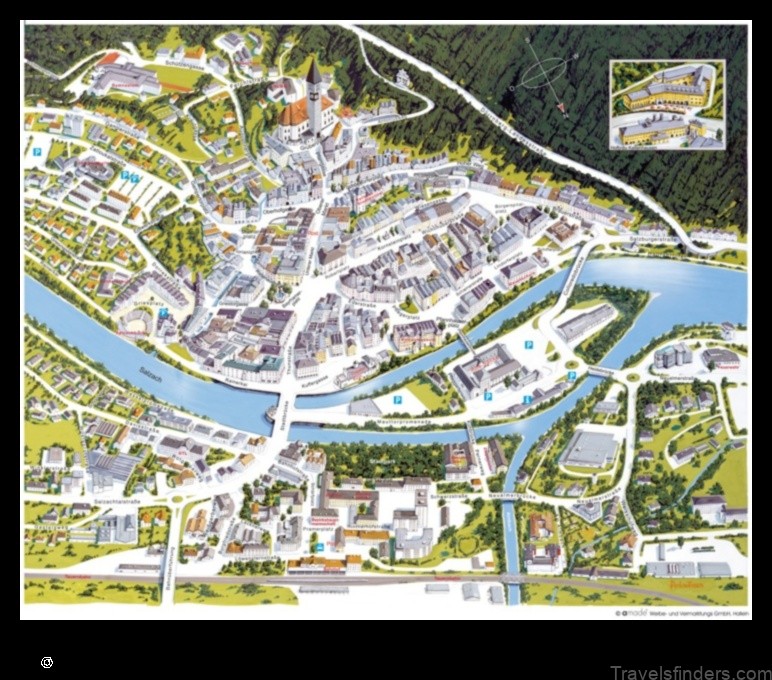TOWER BRIDGE MAP
Crossing Thames River, London Designer/Engineer Sir Horace Jones Engineer Sir John Wolfe Barry Completed 1894
Central Span 200 feet (61 meters)
Materials Masonry, steel Type Bascule/suspension
The Tower Bridge is the only movable bridge of the Thames’s many crossings.
By the end of the nineteenth century, the city of London had expanded so far eastward that London Bridge (see here) could no longer handle the congestion. Consequently, residents eagerly anticipated the Tower Bridge, a new downriver Thames crossing. After a public competition that drew fifty proposals, the design by Sir Horace Jones and engineered by Sir John Wolfe Barry was selected. Jones had proposed a simple yet impressive bridge in the medieval style favored at the time and that harmonized with the nearby Tower of London.
Construction began in 1886. Once it was completed in 1894, however, shock waves flashed through the citythe bridge looked nothing like the original proposal. After Jones died in 1887, Wolfe Barry had realized that the towers would have to be reinforced with steel to support the bridge’s weight, and suspension cables were needed to carry the weight of the two shore spans. On June 30, 1894, the day the bridge opened, The Builder blasted it as “the most monstrous and preposterous architectural sham that we have ever known” and refused to “waste plates” in the magazine by printing a photograph of it. Despite the criticism and because of the bridge’s efficiency and reliability, the reputations of both bridge and engineer were spared. At the peak point of London’s power and modernity, he creates a bridge suitable for King Arthur in order, one supposes, to disguise from himself the fact that he has really built a masterpiece of engineering.
TOWER BRIDGE MAP Photo Gallery
Wolfe Barry produced a hybrid bascule and suspension system. The fixed parts of the superstructure consist of two shore spans, each 270 feet (82 meters) long, and a central high-level span of 230 feet (70 meters). The bridge’s glory is in its bascules, two movable spans that open for maritime traffic, using hydraulics powered by steam engines. Each basculethe two pieces of the roadway that meet in the middle of the span and are raised and lowered in about a minute weighs over 1,000 tons (907 tonnes).
At one time, the spans were raised and lowered more than a dozen times a day. Today, the spans are not opened as frequently because of decreased river traffic. Still, they are lifted many times a year. By law, any vessel with a mast 30 feet (9.1 meters) or more can request a bridge lift, at any time and at no charge.
Two narrow footbridges, 10 feet (3.0 meters) wide and 138 feet (42 meters) above the river, run between the towers. Originally, instead of waiting for the bridge to close, the public could cross the Thames via staircases in the towers, an option that ended in 1910 when it was evident that people would rather wait than climb. However, as part of the bridge’s ever expanding entertainment and educational programming, the walkways were reopened and a glass floor was inserted later to increase its thrills. The glass walkways proved so popular that now sunrise yoga classes are held on them.
The steel-framed towers are veneered in Cornish granite and Portland stone, fabricated in an ornate, exuberantly Victorian style. They are 206 feet (63 meters) high, and are linked by steel walkways.
Wolfe Barry’s design was cutting edge. Rather than installing hand-operated winches to raise and lower the bascules, as had been done previously, he designed a hydraulic system powered by steam, which is contained within the towers, and then duplicated it to minimize the risk of failure. The Hell Gate’s original paint, lead-based, lasted sixty years. By the 1980s, the bridge needed repainting, and Amtrak insisted on the color red. Even before the job was completed, the paint faded, and it continued to fade. “Eight shades of lavender” is how former Queens councilman Peter Vallone described its current color.

